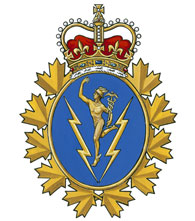32 Signal Regiment

Fort York Armoury
660 Fleet Street West
Toronto, ON, M5V 1A9
Canadian Forces Base Borden
P-151, 65 Ramillies Road
Borden, ON, L0M 1C0
Related Links

Graphic: Joanna Gajdicar
Join Our Team
Looking for full-time or part-time work? We are hiring and provide excellent career opportunities. Please do not hesitate to call or email our recruiter who will be pleased to answer any questions you may have and provide direction on how to apply to our Regiment.
Our Team Recruiter
Name: Recruiting team
Phone: 416-203-4641
Email: 32SigRegtRecruiting@forces.gc.ca
Or contact
Phone: 1-800-856-8488
Find a recruiting centre near you.
When We Train
September to June:
- Toronto: Tuesday evenings
- 7:30 p.m. to 10:30 p.m.
- Borden: Tuesday evenings
- 7:00 p.m. to 10:00 p.m.
- One weekend per month
Full-time summer employment is available from May to August.
Trades In Our Unit
- Signal Officers
- Logistics Officers
- Human Resources Administrators
- Financial Systems Administrators
- Vehicle Technicians
- Supply Technicians
- Signal Operator
- Line Technician
- Signal Technician
- Information Systems Technician
Equipment
Weapons:
- Browning 9-mm Pistol
- C6 7.62-mm Medium Machine Gun
- C7A2 5.56-mm Automatic Rifle
- C9 5.56-mm Light Machine Gun
Vehicles:
- Light Support Vehicle Wheel (LSVW)
- Military Commercial Off-self (MilCOTS)
- G Wagon - Light Utility Vehicle Wheeled (LUVW)
- Medium Support Vehicle System (MSVS)
32 Signals Regiment, a communications unit of the Canadian Army Reserves, was authorized by Ministerial Order dated 26 July 2011, the result of amalgamating 700 Communication Squadron and 709 Communication Regiment. In 2012, again by Ministerial Order, the unit name was corrected to 32 Signal Regiment, the correct styling of the unit name (Signal vs Signals).
The unit is part of the greater Toronto region’s 32 Canadian Brigade Group and consists of part-time and full-time Reserve and Regular Force trades persons, civilian students, professionals, business people, and public servants.
The regiment encompasses the following elements:
- Regimental Headquarters – at Fort York Armoury, Toronto.
- 1 Squadron – at Canadian Forces Base Borden. 1 Squadron (ATHENA) in Borden is named in commemoration of the mascot of the Canadian Women’s Army Corps, the Greek goddess of war Athena. This reminds us of the historical origin of the Squadron as a filter centre for the Canadian Women’s Army Corps from 1962-1964, and readers should also note that the Owl of Athena was the symbol of 700 (Borden) Communication Squadron for the same reason.
- 2 Squadron – at Fort York Armoury, Toronto. 2 Squadron (2nd Signalling Company) in Toronto is named in commemoration of the founding unit of the Regiment in 1907 – the 2nd Signalling Company.
- Support Troop – in Toronto and Borden. Support Troop (The Depot, RC Sigs) is named after the original home of Signals, and the depot at Camp Borden from 1923 to 1938. Support Troop has elements at both locations – Fort York Armoury and the 1 Squadron lines at CFB Borden.
When you join our unit, you will receive competitive pay for your part time or full time work as well as be eligible for on the job training that could benefit you in civilian life. Also, there are medical, dental and educational benefits available to Army Reservists.
Here are all the details:
- Commanding Officer: Lieutenant-Colonel J.W. Moore, CD
- Regimental Sergeant Major: Chief Warrant Officer H.Y. Hua, CD
32 Signal Regiment
Canadian Forces Armoury Fort York
660 Fleet Street West
Toronto, ON M5V 1A9
Phone: 416-203-4600, Ext. 4617
Our Regiment’s earliest component was established in Toronto in 1907 – the 2nd Signalling Company of the newly established Signalling Corps; a component of Militia District No. 2. The company employed semaphore flags, heliographs, and lamps. Construction of telegraph and telephone lines was still the responsibility of the Canadian Engineers, but 2nd Signalling Company also maintained a detachment that paraded with the 2nd Engineer Company in Toronto. In 1911 the company was renamed No. 2 Signal Company.
In August 1914, upon the outbreak of the First World War, 36 officers and signallers from No. 2 Signal Company travelled to Valcartier, Quebec to join the 1st Canadian Divisional Signal Company. During the war telephone, telegraph, runners, and pigeons became standard methods of transmitting messages on the battlefield. In some cases radios were available as well. Members of our Regiment, along with hundreds of other signallers, engineers, and guides served in the different companies of the Canadian Corps Signal Service during the great and terrible battles of 1915 through 1918. All of the units of the Canadian Corps Signal Service were demobilized and disbanded in Toronto during 1919.